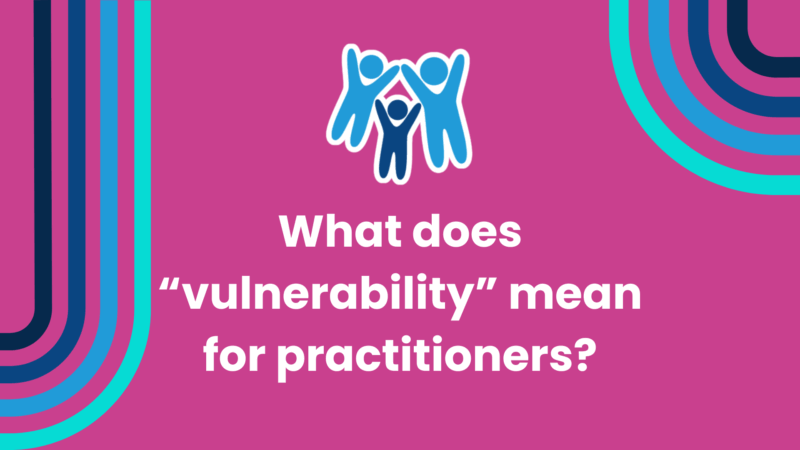Defining ‘vulnerability’

Research in Practice have announced their proposed definition of what ‘vulnerability’ mean for practitioners.
As part of their response to “the Big Listen”, Ofsted commissioned Research in Practice to explore vulnerability further, as there was agreement across Ofsted stakeholder that there should be a broader definition of vulnerability in inspection and regulation of education, childcare and children’s social care.
This definition was refined through focus group discussions, highlighting the importance of shared language about vulnerability. It was agreed that this definition can be easily understood by inspectors, professionals, parents and carers, children and learners. The proposed definition is set out below.
Research in Practice’s proposed definition of vulnerability
Vulnerability is about how likely someone is to experience negative outcomes. It is a state not a trait.
Many things contribute to vulnerability, including:
- big systems and structures (like government or services, poverty, prejudice and discrimination)
- things about a local area like how safe it is, how easy it is to get a good job, or whether a person has a sense of belonging to the community
- relationships with family and friends, and professionals
- individual circumstances (age, income, health, home, and identity).
People experience vulnerability in different ways. This can change over time, even if an issue causing vulnerability is a permanent part of our lives. Experiencing vulnerability may lead to more negative experiences. Lots of things can help to avoid this happening.
The things that help us are called ‘protective factors’, and just like the things that can make us vulnerable, these protective factors can happen at different levels, from individual things within us and around us (like feeling confident and cared for) through to things that society and government can do to make life easier (like tackling discrimination and ensuring our neighbourhoods and homes are enjoyable to live in).
While everyone can experience vulnerability, it’s important that the needs of children and young people experiencing the greatest vulnerability continue to be prioritised by settings and services.
Read the trait to state report to find out more.